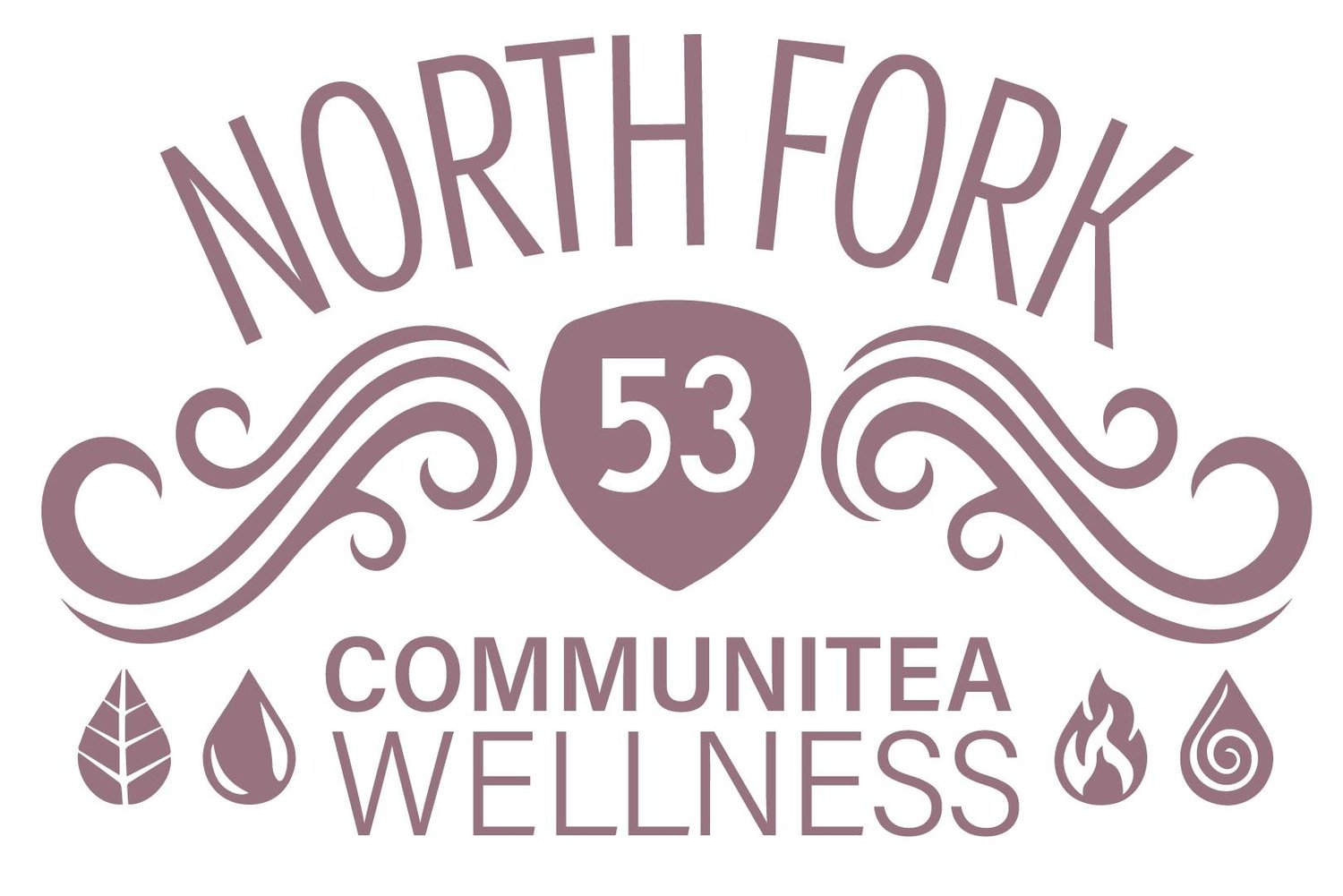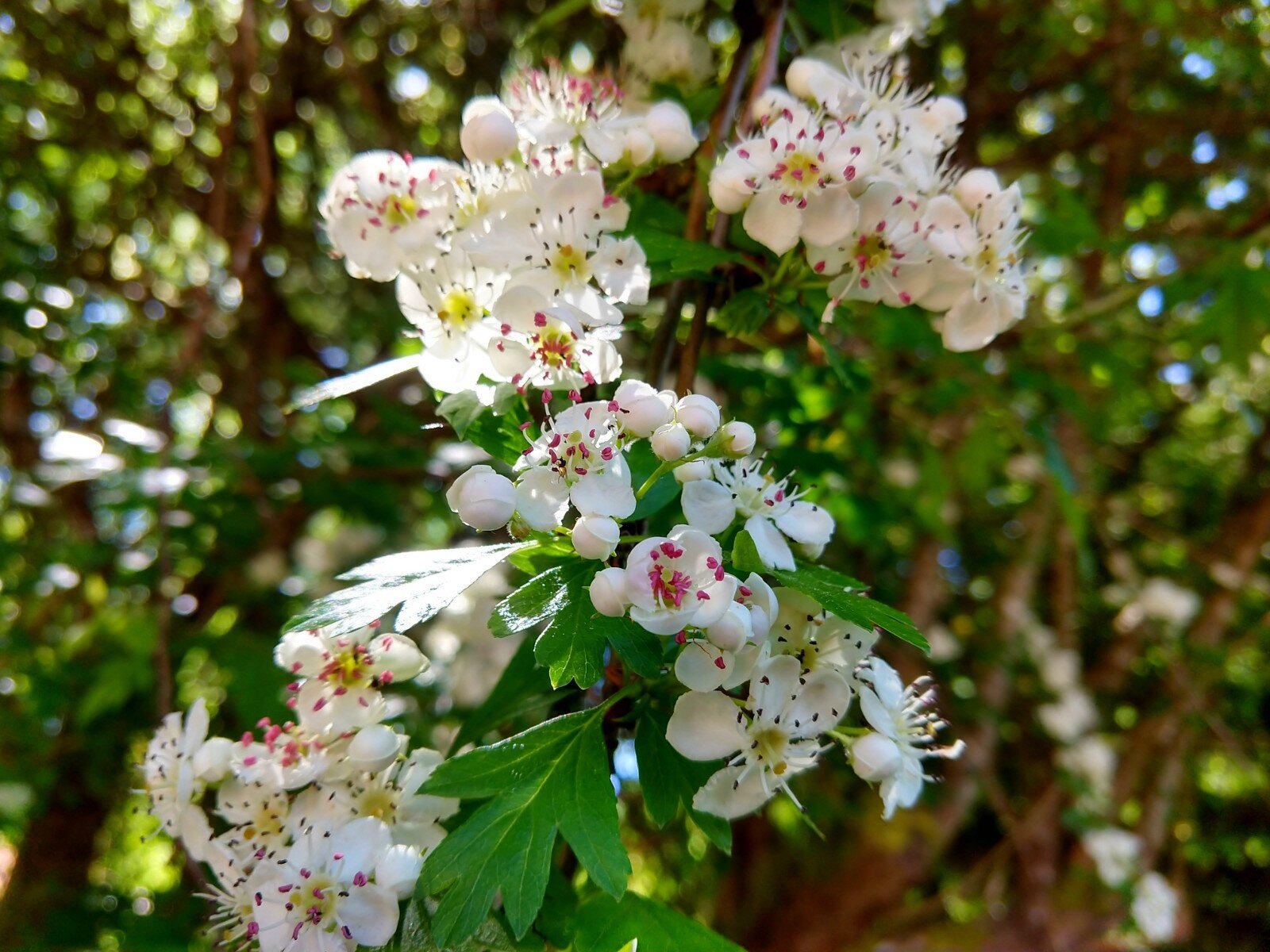Hawthorne - the Queen of Hearts
HAWTHORN (CRATAEGUS spp.)
The day of the fairies return is "the day the hawthorn blooms." As the fairy gates open this May, open your heart to hawthorn. Let its beauty and strength imbue you with great heart, for hawthorn is the herb of healthy hearts.
Known for its abundance of healing properties, Hawthorn has been revered as a sacred tree by humans for thousands of years. The tree holds strong mythic associations many of which seems to contradict each other- such as being a tree of both wild fertility and of pure chastity, of heart opening and of boundaries & protection, of magic & fairies and of Christian faith. One thing is for sure- this shrubby, thorny tree has held a deep fascination and long relationship with cultures around the world. From Ancient Greece to China and the British Isles.
Hawthorn Lore
The three most revered trees in the old Celtic world were the “Oak, Ash and Thorn” (referring to Hawthorn). The “Haw” part of the name is an old word for “hedge”. Hedges were more than just living fences back then; they signified the boundary between the known, safe and civilized world, and the wild woods beyond.
“The word 'hedge' derives from 'Haga' which is contained in the old name for Hawthorn 'Hagathorn' and shares the same root as 'hag'. The hag, in old English was not just an old woman, but a woman of prophetic powers, and 'hagzusa' spirit beings, and 'hedge riders' - in other words, beings that live 'between' the worlds of mundane reality and the otherworld beyond, and who could easily traverse the boundaries between them. Likewise, healers, seers and soothsayers were also considered 'boundary-walkers'. Thus, Hawthorn's symbolism is that of protection, but also as a gateway to this other world of magical beings.”- Sacred Earth)
Perhaps Hawthorn’s association with death comes from the scent of the flowers – some liken it to a rotting fish odor – thanks to trimethylamine. And such the flowers attract carrion insects. During the black plague the smell of Hawthorn in bloom reminded some of death and so unlucky associations formed with bringing its blossoms into the home. But more widely the same scent is associated with sex and therefore fertility. The association with fertility could also be due to Hawthorn’s ability to cross breed so easily. Or maybe it’s because Hawthorn flowers in early May, the time of Beltane fertility rites and blessings. (Note that in the old English Calendar Beltane would have fallen on May 13th and not on May 1st, which is around our current Mother’s Day and when the trees begin to blossom in Oregon).
The best beloved hawthorn tree in Britain is the ‘Glastonbury Thorn’ or ‘Holy Thorn’, said to have originated when the staff of the visiting Joseph of Arimathea was struck into the ground and sprouted. (unfortunately it was badly damaged by vandalism in 2000 but it is still alive!) There are other big trees, seedlings from generations of Glastonbury Thorns in the area. Each year a sprig from one of the oldest trees is sent to Her Majesty the Queen to join her Christmas decorations.
The great Abbey of Westminster in London stands of the site of a group of ancient hawthorn trees, evidence once more of Christianity using pagan sites of worship in order that the people could simply continue in their place whilst being taught different values.
Birds find refuge in the thorny branches of Crataegus, nesting there to keep away from predators. The thorns of Hawthorn have the potential to become branches. If you look closely at one of these trees you might spot thorns with leaves, flowers, and berries growing off of them. Consider all of that potential energy stored in this healing tree along with the fact they can live up to 400 years!
Healing Properties
In Western Medicine, Hawthorn is the ultimate heart tonic. It has the power to both raise and lower blood pressure (this is known as being “amphoteric”). How? According to herbalist Matthew Wood, it "improves the deposition of lipids in the walls of the capillaries and red blood cells that are squeeze through them.” This cuts down on “irritability” allowing free passage of the blood flow. Hawthorn also helps lower LDL (“bad”) cholesterol and increase HDL (“good”) cholesterol. It is highly regarded as a safe way to lower blood pressure when the patient is diabetic or has kidney disease. An injectable preparation of hawthorn was widely used in modern medicine prior to the introduction of blood pressure drugs and heart-valve surgery. It is still available in Germany.
Harvesting our farm Hawthorn tree from the roof!
The leaves, flower buds, flowers, and berries/haws of the hawthorn are all rich in anti-oxidant flavonoids. Flavonoids benefit the heart and blood vessels in many ways. Their powerful anti-inflammatory effects relax the blood vessels. Their anti-microbial actions stop low-level infections like those associated with gum disease from harming the heart. And flavonoids support healthy functioning of the immune system and the liver. No wonder hawthorn is the herb of longevity in stories and tales!
The nutrients in hawthorn assist its active ingredient so that the heart and circulatory system are slowly and deeply healed on multiple levels. Hawthorn carries its magnesium and calcium directly to the heart muscles, enhancing their ability to contract and increasing available oxygen. This beneficial effect extends into the coronary blood vessels as well. Hawthorn is unique in its ability to strengthen the weak heart and carry the old heart into a healthy future.
Regular use of hawthorn can
Lower blood pressure
Increase the effectiveness of the heart's pumping action
Strengthen the heart muscle
Slow the heartbeat
Dilate coronary arteries
Prevent heart disease, heart attack, and stroke
Help those healing from heart surgery
Support the immune system
Increase longevity
Hawthorn is safe to take with any other medicine although if you are using cardioactive pharmaceuticals like digoxin, consult your doctor for supervision. Dose adjustment may be necessary.
Working with Hawthorn
Hawthorn is member of the rose family, and thus closely related to rose hips, apples, cherries, apricots, and almonds. Hawthorn is notable for its long thorns and bright red haws (apple-like berries). The thorns may be used as needles; and hedges of thorny hawthorn grow quickly enough to keep even goats at bay. The tasty crimson haws -- called cuckoo's beads, chucky cheese, and pixie pears -- are fermented into wine, made into jams and jellies and baked into little cakes. The leaves, flowers, and ripe berries of Cratageus oxyacantha taste great and are easily consumed in teas, infusions, and tinctures.
To use Hawthorn as heart medicine you can choose to make a strong tea, which is typically made by steeping two teaspoonfuls of dried leaves and flowers in a cup of boiling water for twenty minutes.
Or you could make a Hawthorn infusion. Which is made by steeping one ounce of dried flowers and leaves or one ounce of dried haw berries in a quart of boiling water for at least four hours.
A dose is a cup of tea or half a cup of infusion normally taken once or twice a day as needed. Traditional European herbalists often add a big spoon of honey to hawthorn tea or infusion. They believe that the sweetness heals the heart.
Make a Hawthorn Flower Essence
Hawthorn can help heal a broken heart and is often recommended during times of grief. The flower essence can be used in addition to the herb, or alone, to heal emotional wounds.
How to make a Hawthorn flower essence:
Flower essences are a type of vibrational medicine, akin to homeopathy, in which the healing energy of flowers is captured in a process of dilution, and no flower parts remain in the finished remedy.
It is easy to make flower essences and they are a wonderful complement to herbal medicine because they address the underlying emotional causes that create problems in the body. Sometimes addressing the emotions can resolve physical symptoms and ailments.
They can work quickly, or take time to clear blockages. Similar to doing a detox cleanse, it is possible that you may initially feel heightened awareness of symptoms as stagnant emotional patterns are unearthed.
Flower essences offer a wonderful way to heal and grow because they affect change at a deep emotional level.
They are safe for all ages, and even pets, and the don’t interact with medications.
Making the concentrate or “Mother Essence”
Float fresh Hawthorn flowers in pure spring or well water in sunlight for 20 minutes to 3 hours or until more than half the flowers are wilted.
Remove the flowers and transfer the liquid to a clean bottle. A small tincture bottle is good, about 50 ml. A funnel would be helpful.
Mix the flower water with an equal amount of brandy or glycerine.
Shake the bottle 100 times to mix them.
Label as “Mother.”
Notes: Flower essences made with brandy will last decades, glycerine will last about 5 years, and plain water essences will last a few days. Look for or prepare glycerine based essences if you do not consume alcohol.
Make a Stock Remedy
Fill another small bottle with half water and half brandy. Add 5 drops of the mother. Shake 100 times. Label as “Stock Remedy.”
Make a Treatment Bottle
Combine water and 30% glycerine or brandy. Add 5 drops from the stock bottle. Shake 100 times. Label.
Keep the Mother and the Stock, and you can make flower essences to last a lifetime (if you have used brandy). Simply make more treatment bottles with the stock, and make more stock from the mother when you run out.
The treatment bottle is what you will use for the following methods:
Ways To Use Hawthorn Flower Essence
Hawthorn is a renowned heart healer. As a flower essence, it heals broken hearts, opens the heart chakra, eases grief and enhances expressions of love. It also helps balance emotional extremes.
Take 3-5 drops in the mouth or in water, 3 or more times daily.
Use as a room spray – add 3 to 5 drops to a spray bottle full of water.
Add about 20 drops to a bath.
Flower essences can also be added to healing creams or lotions.









